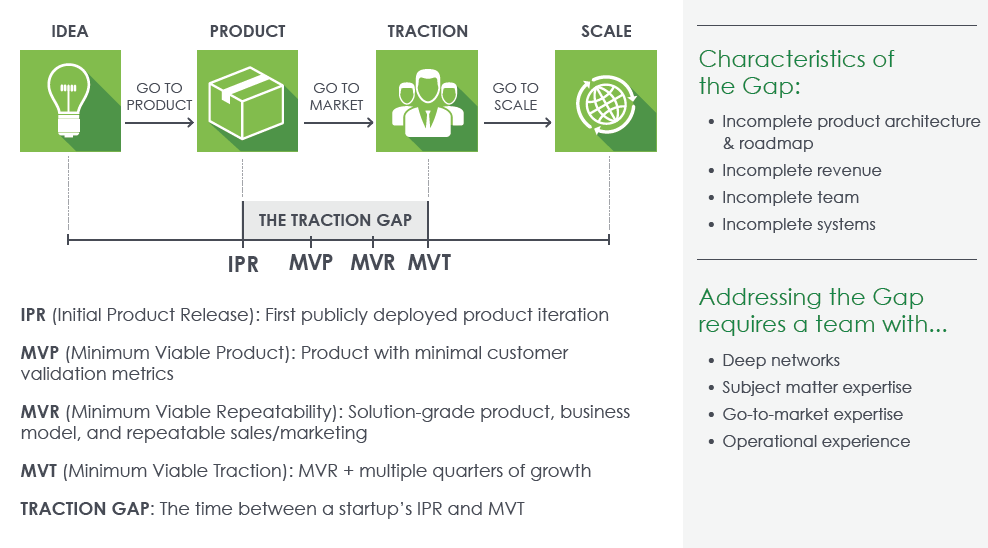Understanding the Traction Gap
August 8, 2016
PUBLISHED BY Bruce Cleveland
SOURCE PeHUB Network
Venture capital’s grief might be wider than the industry thought: A Series B crunch may be upon us.
And this puts more pressure on entrepreneurs to ensure that their moves into the market go with as few flaws as possible. Here, I want to focus on the Traction Gap, a critical point in the tech process that trips up so many startups.
First, the numbers. In the first quarter of 2016, Series B rounds dropped nearly 40 percent, the largest reduction since the 2008 market correction, according toMattermark.
Late-stage rounds were similarly affected, echoing common themes. The tech bubble is popping and companies not focused on fundamentals are likely to have a difficult time raising subsequent rounds.
In bubble times, even a company with a mixed record can access capital. But with the flight to quality that started in recent quarters, we are likely to see many down rounds, suboptimal acquisitions and more and bigger failures.
The Lean LaunchPad, introduced by Steve Blank, and the Lean Startup initiative, led by Eric Ries, have been instrumental in helping early-stage startups make the transition from idea to minimum viable product, the so-called go-to-product phase.
Similarly, the Chasm, developed by author Geoffrey Moore, has helped later-stage startups advance from selling first to visionaries and innovators, then to early adopters and skeptics and eventually to Main Street.
What occurs between early-stage idea and Main Street success, however, has remained largely undocumented. Consequently, too often companies have faltered in the middle, during the go-to-market phase, as they fail to generate sufficient momentum to attract new investors. This is what we call the Traction Gap.
The Traction Gap is the time between a startup’s initial release of its product and the product’s acquiring minimum traction in the market. This minimum traction, in turn, can be a level of revenue growth, user engagement, number of downloads, usage or other variables that show the market considers the product viable and that signal a positive growth trajectory.

In a blog, “Startup Lessons Learned,” Ries noted that “what matters is proving the viability of the company’s business model, what investors call ‘traction.’”
According to Correlation Ventures, the overall success rate for early-stage startups is less than 25 percent and mean returns are less than 2.6x. For this reason, most early-stage venture firms look for the initial traction metrics before they will invest.
For entrepreneurs, the first step in successfully traversing the Traction Gap is recognizing that you are in your Traction Gap and understanding where you are in it. The next step is understanding the four core rules of thumb that can help you make it across quickly and efficiently. We will cover these in my next article.
Read the original article in PeHub here.
Read the second part of this article series here.
KEYWORDS